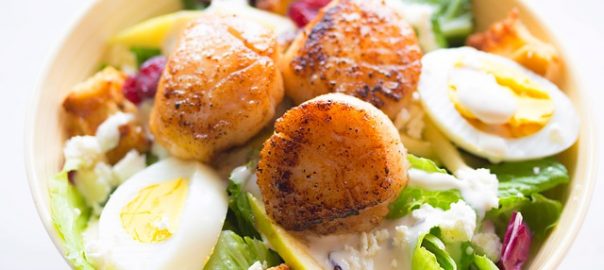What is clean eating?
There’s a lot of media exposure and talk about “clean eating” but what is it exactly? The widely accepted definition is that clean eating means avoiding highly processed foods, refined sugars, and eating a diet rich in whole foods in their most natural state. For fruits and vegetables that means buying organic for The Dirty Dozen. When it comes to animal products, it means buying free-range or pastured with no antibiotics, pesticides, or added hormones.
For some people a clean eating diet also means no gluten. The challenge with going gluten-free (whether on a clean eating diet or not) is that you need to avoid the gluten-free crutch foods that are scattered all over the grocery store shelves. These highly processed gluten alternatives are not a healthy choice.
1. Start with breakfast
Many people often skip breakfast, possibly because they’re running late or they’re too busy to stop and have a meal. But breakfast is how you fuel your body for the day ahead. If you are going to have breakfast, don’t just choose simple carbohydrates or a fast food option. You want a real food breakfast that will provide healthy fats, protein, and complex carbohydrates.
2. Simple Swaps
- Hummus is a great alternative to mayonnaise. But instead of being mostly fat, it’s mostly protein. And it has a similar consistency to mayo making it perfect for wraps, dressings, and spreads. If you’re buying it in the store be sure to read the label in order to make sure you are getting the cleanest possible option. Or make it really clean by simply making your own at home.
- If you’re looking for yogurt it’s easy to be distracted by the fruit-flavored varieties on the dairy case shelves. But the prepared fruit yogurts tend to come with excessively high levels of sugar and may also have other artificial colors, flavors, or preservatives, none of which you want on a clean eating plan. Instead choose plain, whole milk yogurt, either regular or Greek-style and add your own sweeteners and flavoring. Options could include fruit, honey, chopped nuts, or delicious spices like cinnamon.
- Our modern diet has led us to feel that we have to have rice or potatoes or pasta with a meal. We’ve been taught that you “need” a starch. If you feel you still want that to make your meal complete, choose more complex carbohydrates like riced cauliflower, sweet potatoes, or simply double up on your veggies. Cauliflower can also be used as a substitute for mashed potatoes without too much extra effort.
- Salad and dressing seem to naturally go together. Unfortunately, if you take the time to read the label on the back of the bottle it’s not good news. Filled with loads of preservatives and artificial ingredients, these are definitely not part of the clean eating ideal. Instead make your own vinaigrette by combining 1/2 cup olive oil, 3 tablespoons vinegar or lemon juice, salt, pepper, and the herbs or seasonings of your choice.
3. Don’t Do This
Just as important as all the things listed above that you want to do, there are few things that you need to keep in mind to not do:
- An easy way to clean up your diet is to skip those foods that are most highly processed and offer the least nutrition. That includes white rice, pasta, cookies, crackers, and chips. Choose nutrient-dense foods that will actually support your health like raw nuts, veggies, and quality proteins.
- Juices, juice drinks, and soft drinks are empty calories. Truthfully they’re nothing more than liquid candy bars. They provide little to no nutritional value and should be avoided. Eat those fruits instead of juicing them so you can enjoy the fiber which helps to slow down how quickly the sugars hit your bloodstream. If you’re thirsty choose water, herbal teas, or home-made green juices instead.
- We’ve been misled to believe that artificial fats like margarine are good for us. We’ve also been guided towards vegetable fats like canola or corn oil. What you really want is healthy fats like butter, ghee, or beneficial oils like avocado, olive, and coconut. These are nourishing, satiating, and supportive.
As you start your clean eating journey it can be helpful to use a food journal so that you can see the progress that you're making. It's also important to remember that it's not easy to make all of these changes at once. Baby steps are the key to success here. Start with one thing, like eating breakfast or making a healthy swap. Master that and then move on to the next thing. Before you know it you'll be well versed in what those clean eating choices are and you'll be focused on your health goals.
Clean eating is a good step towards a healthy life. In fact, it's one of the #IngredientsForAHealthyLife. If you're looking to do even more and learn how to really understand what's in your food, be sure to read The Pantry Principle.


